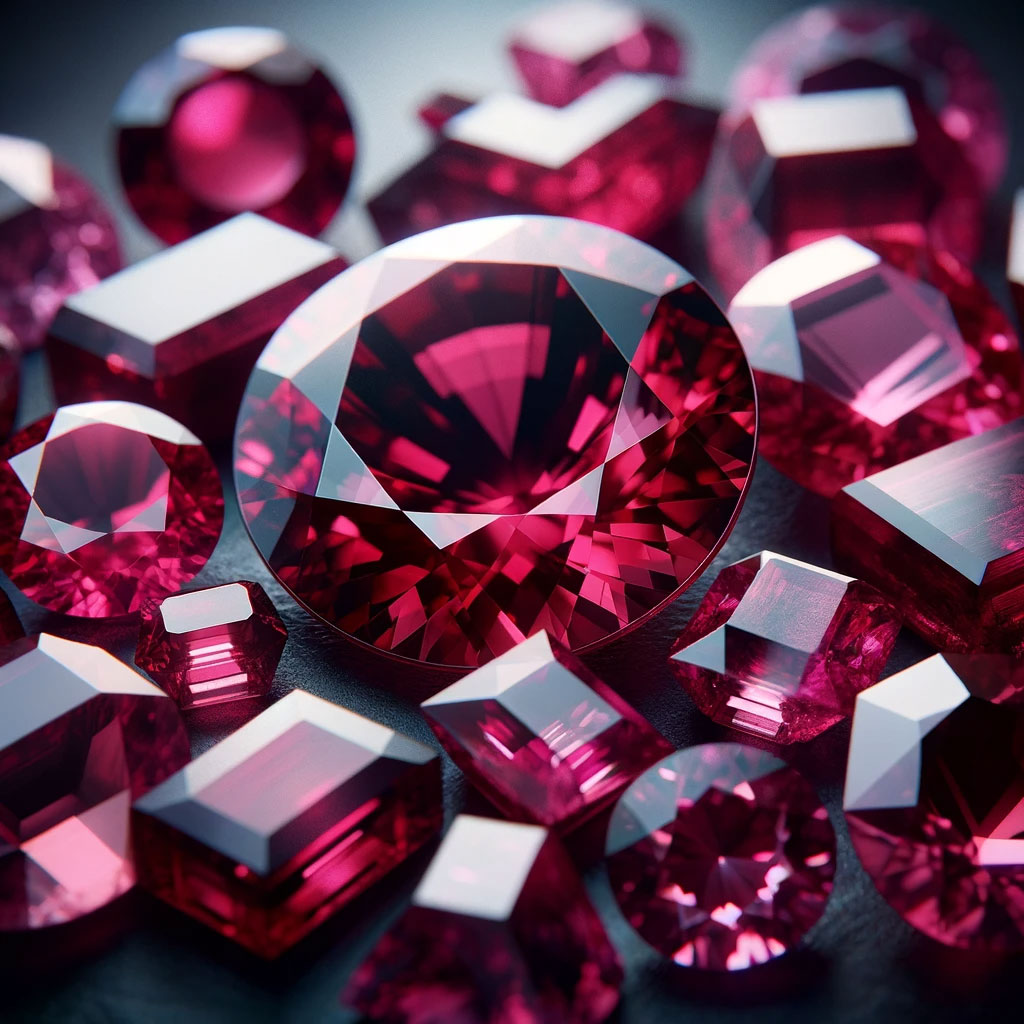The ruby possesses an unparalleled ebullient allure within the alluring realm of jewels. The ruby, prized for its vivid red color, represents the ardor of life itself and is more than just a representation of luxury and passion. Rubies, a part of the corundum family and rank with diamonds, sapphires, and emeralds in the pantheon of precious stones, are prized for their extraordinary beauty, rarity, and durability.
This investigation into the world of ruby stones exposes the rich history, artistic inspiration, and geological marvels that led to their birth. We will travel through the characteristics of rubies—from their intense red tones to their exceptional hardness—that make them sought-after gems. The history of the ruby is a tapestry of human creativity woven with the artistry of nature, from the ancient mines to the workshops of the master jewelers. Explore the appeal of ruby stones with us as we explore their journey from rough crystals embedded in the earth’s crust to dazzling jewels gracing crowns and modern clothing. This story reveals why rubies have captured people’s hearts throughout history and cultures as symbols of wealth, power, and love.
Rubies are nature’s masterpieces, formed under immense heat and pressure deep within the earth’s mantle. They are a variety of the mineral corundum, made primarily of aluminum oxide. Trace amounts of chromium are responsible for the ruby’s red color, ranging from pinkish hues to deep, pigeon blood red. The interaction of these elements under the earth’s crust, along with the precise temperature and pressure conditions, culminates in the creation of these magnificent gemstones.
Where Rubies Are Born
Rubies are found in several parts of the world, each source imparting unique characteristics to the stones. The Mogok Valley in Myanmar (formerly Burma) is famed for producing some of the most exquisite rubies, known for their exceptional color and clarity. Other significant sources include Thailand, known for its darker, more burgundy rubies, and East Africa, particularly Madagascar and Mozambique, where newer mines yield rubies of remarkable quality and color.
Varieties of Rubies
The variations in ruby stones are as diverse as their geographical origins. The Burmese rubies, often considered the benchmark for quality, are famed for their pure red color with a slight hint of blue. Thai rubies tend to have a darker, almost maroon hue, while African rubies are known for their vivid, sometimes fluorescent, red color.
The quality of a ruby is determined by its color, clarity, cut, and carat weight, with color being the most crucial factor. The most prized rubies are those with vibrant red saturation, minimal inclusions, and a good cut that enhances their natural brilliance.
If you want to buy a lab-certified emerald, please get in touch with me on WhatsApp.
Certainly! Here are some Frequently Asked Questions (FAQs). These questions aim to address common curiosities and provide concise, informative answers.
Frequently Asked Questions About Ruby Stones
Q1: What gives ruby stones their red color?
A1: Ruby stones owe their characteristic red color to the presence of chromium in their composition. The amount and distribution of chromium determine the intensity and hue of the red in the ruby.
Q2: How can you tell if a ruby is real?
A2: Authentic rubies have unique characteristics like specific inclusions, color distribution, and hardness. They can be identified by their rich red color, high density, and how they refract light. A professional jeweler or gemologist can perform tests to confirm authenticity, including using a loupe or microscope to examine the gemstone.
Q3: What are the most famous ruby mines in the world?
A3: The most renowned ruby mines are located in the Mogok Valley in Myanmar (Burma), known for producing high-quality rubies with a deep red color. Other significant sources include Thailand, Madagascar, Mozambique, and Afghanistan.
Q4: Why are Burmese rubies considered the best?
A4: Burmese rubies, particularly those from the Mogok Valley, are highly valued for their exceptional “pigeon’s blood” red color and superior clarity. These characteristics make them sought after and often more expensive than rubies from other regions.
Q5: How should I care for ruby jewelry?
A5: Ruby jewelry should be cared for by avoiding exposure to harsh chemicals and extreme temperatures. Clean your ruby jewelry with warm, soapy water and a soft brush. It’s also advisable to store ruby jewelry separately to prevent scratches from harder gemstones.
Q6: What is the significance of rubies in history and culture?
A6: Rubies have a rich history and are steeped in cultural significance. They have been symbols of passion, protection, and prosperity in various cultures. Historically, rubies were favored by royalty and were believed to bring good fortune and health.
Q7: Are rubies rarer than diamonds?
A7: High-quality rubies, especially those with exceptional color and clarity, are rarer and can be more valuable than diamonds of a similar size. The rarity and demand for premium rubies often drive their value higher than diamonds.
Q8: Can rubies be treated or enhanced?
A8: Rubies are often treated to enhance their color and clarity. Common treatments include heat treatment and filling fractures or cavities with lead glass. It’s important to inquire about any treatments a ruby may have undergone, as this can affect its value and care requirements.
Q9: How is the quality of a ruby determined?
A9: The quality of a ruby is primarily determined by its color, clarity, cut, and carat weight. The most valued rubies have a vivid red color, minimal inclusions, a well-executed cut that enhances their brilliance, and a significant size.
Q10: What are synthetic rubies?
A10: Synthetic rubies are lab-created gemstones with the same chemical, physical, and optical properties as natural ones. They are an affordable alternative to natural rubies used in various jewelry pieces.

